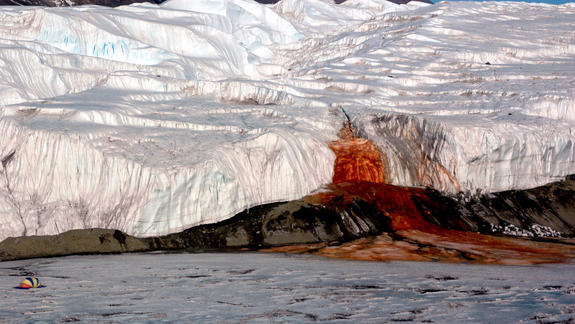THE
government will do whatever is within its reach to empower the National
Electoral Commission (NEC) in terms of resources to support voter
registration efforts through the Biometric Voter Registration (BVR)
system.
“All
we need from NEC is to see this exercise (of registering voters)
continuing and ending as planned,” said President Kikwete in his last
month address to the nation.
“I
have already instructed the Treasury to make the electoral commission
the first priority in fund release. If it’s not done that way, let NEC
officials come and tell me.”
He
described the voter registration exercise, which Prime Minister Mizengo
Pinda officially launched in Makambako in Iringa Region on February 24,
as successful so far. Such success will be replicated countrywide. “The
BVR technology will help us to end mistrust among ourselves, complaints
and claims about election rigging.
The
use of this new technology is testimony to the government’s willingness
to have free, transparent and fair elections,” said the president.
Giving statistics, the president said that between February 23 and 25,
2015, for instance, NEC anticipated to register 9,541 voters but thanks
to the positive response, 13,042 voters were registered, with each
station registering between 80 and 150 people, daily.
The
target is to register 32,000 voters in Makambako, at an average of
4,320 people daily, said the president. He hinted that as per the
observed trend of registering 6,000 people daily, the target will be
surpassed by far.
He
challenged all citizens with qualifications to register as per NEC
timetable, warning that there will not be any other opportunity to do so
before the coming general elections in October, 2015. He urged
religious, political, government and civil society leaders to
collaborate with the electoral commission in mobilising members of the
public to register.
“Please,
let us not confuse people by giving conflicting information that
discourages them from registering,” warned the president. The government
was determined to ensure that all qualified people get registered.
President Kikwete admitted the likelihood of weaknesses related to the
new system, but urged the ‘wananchi’ to remain calm as the hitches were
being addressed.
Tanzania
Mainland received 1,141,300 copies of the Proposed Constitution for its
25 regions and 200,000 copies were distributed in Zanzibar.
Mr
Kikwete said 420 civil societies in Tanzania Mainland and 75 societies
in Zanzibar have registered for provision of public awareness on the
Proposed Constitution, but added that the campaign will start in
accordance with the NEC timetable.
Early
this month, the National Electoral Commission (NEC) gave an assurance
of the October general election and allayed fears of adjournment as
propagated by some politicians.
NEC
Chairman, Judge (Rtd), Damian Lubuva said voters’ registration exercise
would be completed before end of July and all registered voters will
exercise their constitutional rights to vote for their leaders. “NEC has
no plan or intention to postpone the October elections for any reason.
Before
end of next month (May) a total of 8,000 Biometric Voters’ Register
Kits (BVR) would be in use to speed up the process. “We (NEC) call upon
political leaders to stop misleading the public under the pretext of
fear for delayed update of voters’ register.
The
exercise is in good progress and all eligible voters will be registered
accordingly,” Judge Lubuva emphasised when speaking at a media
conference in Dar es Salaam recently. It was explained that voters who
will turn 18 years old by October, this year, are also being registered
to make sure that not a single age-qualified person was left out of the
inventory.
The
NEC Director of Procurement, Dr Gregory Kaijage, said it was not proper
to calculate the number of days required for completion of voters’
registration exercise based on Njombe experience because the more BVR
kits are received, the greater the registration pace.
“NEC
has 248 BVR kits at work in addition to 1,600 others arrived from
Dubai. The same number of kits will arrive ready for effective operation
in Dodoma, Mbeya, Katavi and Rukwa.
All
these BVR kits will be allocated to the regions for simultaneous
operation. In this regard hardly 28 days will be enough for completion
of the specified regions,” Kaijage.
Voters’
Registration Director, Dr Sisti Kariah announced commencement of the
second phase of voters’ registration officially starting April 24, 2015.
The
next regions after Njombe include Iringa, Lindi, Ruvuma and Mtwara.
“The plan is to have in place 8,000 BVR kits to expedite registration of
voters. Early May more kits will be received for registration in
scheduled regions. These include Singida, Tabora, Kigoma and Kagera.
Other
regions will follow to make sure that by July all will be in the
register,” Kariah explained. The clarification by the NEC followed
recent statements by some politicians who pointed an accusing finger at
the commission, expressing doubt over timely completion of registration
of voters.
The
Zanzibar Electoral Commission (ZEC) will from May 16 commence a 44-day
update of the National Voter Register (NVR) in preparation for the
general elections in October.
“We
aim through the general update exercise to register eligible Zanzibaris
of 18 years and above, as well as those who missed registering during
the mass registration exercise,” the ZEC Director, Mr Salum Khamis Ali
said recently adding that ZEC has already set up its plans for the
elections, scheduled for October 25, this year, “If all goes well and
unchanged.”
He
appealed to all bona fide Zanzibaris to register because there will not
be another registration before the polls. The director said ZEC was
also encouraging people with disabilities to register for voting - and
that under the newlyestablished ‘Gender and Social Inclusion Policy’
voting environment for such citizens will be improved.
According
to him, his office has formed the ‘Zanzibar Voter Education Reference
Group (ZVERG)’ with members from various stakeholders, including NGOs,
security organs and political parties. The group’s role is to carry out
voter education. “We are doing all what we can, including being
transparent to minimise complaints from political parties and other
groups.
We
thank UNDP for its ongoing performance assessment drive to improve our
work towards the general elections,” he remarked. ZEC Chairperson Jecha
Salim Jecha said that there can be no credible election without the
participation of all eligible citizens, including men, women, youth, the
elderly, disabled, rural and urban dwellers.
Zanzibar
President Ali Mohamed Shein has urged the islanders to maintain peace
and stability, saying it was crucial at this time when the country is
heading to the general elections.
“We
need peace, love and tolerance at this time during election, and after.
The government will act accordingly in case of any person or group bent
on causing a breach of the peace,” Dr Shein gave the warning recently
when addressing CCM youth, who took part in a procession in memory of
the first president of Zanzibar, the late Sheikh Abeid Amani Karume.
He
said peace and stability were prerequisites to economic and social
development, challenging the youth to ensure maintenance of peace in the
Isles.







